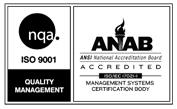Chemical compatibility refers to how well the materials used in a pump (like the diaphragms, housings, seals, and valves) can withstand the chemical properties of the fluid being pumped — without degrading, swelling, corroding, or failing. It is one of the most important factors when choosing an AODD pump for corrosive, abrasive, or reactive fluids.
Why It’s Critical for AODD Pump Performance
Air-operated double diaphragm (AODD) pumps are widely used in chemical processing, water treatment, and industrial fluid handling because of their broad chemical compatibility. However, even AODD pumps need to be matched properly with the specific fluid type to prevent costly damage, leaks, or system failure.
If materials are not compatible:
- Diaphragms may blister, crack, or rupture
- Valve seats may swell or warp
- Pump housings may corrode
- Contaminants may leach into the fluid

Common Chemicals That Require Compatibility Checks
Here are some examples of fluids that require careful compatibility consideration:
- Acids (sulfuric acid, hydrochloric acid, nitric acid)
- Caustics (sodium hydroxide, potassium hydroxide)
- Solvents (acetone, MEK, xylene)
- Bleach and oxidizers (sodium hypochlorite)
- Alcohols and glycols
- Petroleum products
In these cases, using the right diaphragm material (e.g., PTFE, Santoprene, Viton) and pump body (e.g., polypropylene, PVDF, stainless steel) is essential.
How to Determine Compatibility
To ensure safe operation, always:
- Use a Chemical Compatibility Guide – Many manufacturers provide compatibility charts based on temperature and concentration.
- Identify Exact Chemical Names and Concentrations – Generic names (like “acid”) are not enough.
- Consider Operating Temperature and Pressure – These factors can accelerate chemical breakdown.
When to Prioritize Chemical Compatibility
- Handling aggressive or unknown fluids
- Transferring solvents or corrosives
- Operating in high-temperature or high-pressure conditions
- Food, pharma, and clean room applications (where material leaching must be avoided)
Material Options and Their Compatibility
Common Diaphragm Materials:
- PTFE (Teflon): Excellent for acids, solvents, and aggressive chemicals
- Santoprene: Good for general-purpose applications, mild acids
- Viton (FKM): Handles high temps and aggressive fluids
- EPDM: Good for alkaline solutions and cleaning agents
Pump Housing Options:
- Polypropylene: Economical, handles many chemicals
- PVDF: High-end plastic for aggressive chemicals
- 316 Stainless Steel: Excellent for solvents, fuels, and high-pressure systems
- Aluminum: Limited compatibility; good for oils and water-based fluids


Get Social